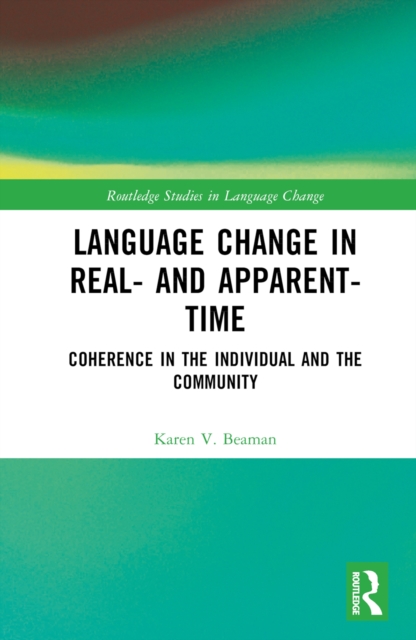
Language Change in Real- and Apparent-Time : Coherence in the Individual and the Community PDF
by Karen V. Beaman
Part of the Routledge Studies in Language Change series
Description
This book makes the case for the value of a combined panel and trend study approach in studying real- and apparent-time language change to reconcile conspicuous disparities between the individual and the community. Through an examination of the Swabian dialect in southwestern Germany in two speech communities over four decades, this volume resolves critical methodological challenges in investigating lifespan and community change. This work affirms the importance of the speech community in shaping change and demonstrating how speakers' notions of local identity and community belonging inform their choice of linguistic variants.
Drawing on a comprehensive, integrated methodology, this research brings together diverse approaches for measuring changing social constructs and analyzing linguistic structures using state-of-the-art statistical methods bolstered by participant-observer and ethnographic observations. Beaman explores indexicalities of identity, accommodation, and geographic mobility to investigate how predictable sociolinguistic patterns promote variation and influence language change. Empirically, this volume documents processes of dialect leveling and supraregionalization and the emergence of a "Swabian Renaissance" among younger, well-educated urban speakers who leverage the social indexical status of certain linguistic variables to convey social meanings of local prestige and community belonging. Methodologically, this book offers best practices from a combined panel and trend study, demonstrating the compatibility and complementarity of real- and apparent-time analyses in uncovering the nature, rate, and dispersion of linguistic change. Theoretically, this work links intraspeaker lifespan change and interspeaker community change into a holistic approach, pushing forward our understanding of the role that "orderly heterogeneity" plays in language variation and change.
This book will be of interest to students and scholars in sociolinguistics, linguistic anthropology, dialectology, and historical linguistics.
Information
-
Download - Immediately Available
- Format:PDF
- Pages:334 pages
- Publisher:Taylor & Francis
- Publication Date:27/03/2024
- Category:
- ISBN:9781003853244
Other Formats
- EPUB from £31.58
Information
-
Download - Immediately Available
- Format:PDF
- Pages:334 pages
- Publisher:Taylor & Francis
- Publication Date:27/03/2024
- Category:
- ISBN:9781003853244










